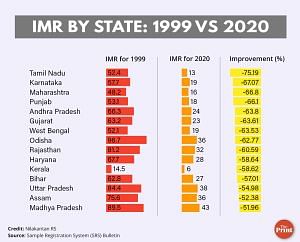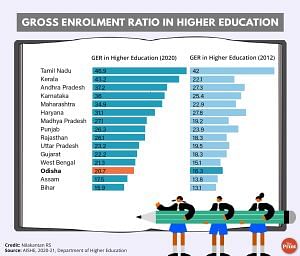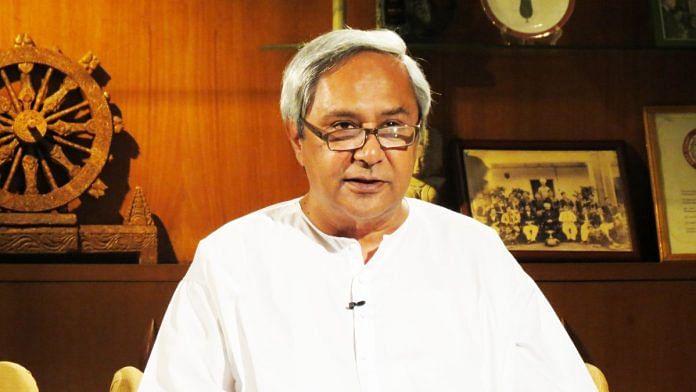Multiple politicians and political parties – particularly incumbents – have fought elections in the name of stability and continuity. The claim that stability is a necessary condition for good governance is assumed to be axiomatic. Examining such assumptions, particularly in the context of state governments that have had chief ministers with long tenures, is useful.
For example, Naveen Patnaik, the current chief minister of Odisha, has been in power since 2000. Whatever the merits or demerits of such an unbroken and long tenure in an electoral democracy, the good thing is that it gives us the ability to measure governance outcomes clearly and attribute those to said politicians. Twenty-three years is more than twice as long as the median number of years a child goes to school in India.
One aspect of the modern republic that makes measuring outcomes and attributing them to state governments difficult is the increasing centralisation of policymaking. Isolating policy outcomes of state governments is tricky. But some aspects of governance are still basic functions of state governments; the most basic of these functions happen to be in the spheres of public health and education. So, to measure the performance of Patnaik, who has been one of India’s longest-serving chief ministers, it is imperative to compare Odisha’s progress in health and education with that of other states over the last 23 years.
Also read: Madhya Pradesh is richer than Bihar. So, why is it still lagging behind in…
What IMR figures reveal
The metric that is universally used to measure the health of a developing society is the Infant Mortality Rate (IMR). It’s easy to measure, difficult to fudge and robust as an indicator. In 1999, the last year before Patnaik became Odisha’s CM, the state had the worst IMR – 96.7 – among large states. In 2020, the last year for which data is available, Odisha’s IMR was 36. It’s still in the bottom half, but it’s at least not the worst. Madhya Pradesh and Uttar Pradesh – two large regions with an oversized impact on national politics – are among the worst-performing big states, with IMRs of 43 and 38 in 2020. MP, incidentally, is another state that has also had a chief minister with a long tenure.
But a closer look at the data reveals a troubling trend. Despite having a base effect advantage, India’s bottom half hasn’t done well enough in terms of its rate of improvement when compared to the better-off states. It is, after all, a lot easier to improve at a faster rate from a worse-off position than it is from a relatively better-off one. Odisha’s peers in IMR – Assam, UP and MP – are India’s least improving states in that metric. Odisha breaks from this terrible company and does slightly better in terms of its rate of improvement, but only ever so slightly.

Also read: West Bengal economy’s fall has been stunning. Too obsessed with agriculture
Analysing GER figures
In education, the other domain that affects basic life and one that state governments still retain control over, Odisha seems to have maintained its general lacklustre performance. It’s near the bottom and hasn’t improved at a rate that such a low base warrants. The Gross Enrolment Ratio (GER) in higher education is a useful indicator of how well a society is doing in education. A higher GER in colleges and equivalent institutions point to a consistently high enrolment in lower grades as well, since children need to go through school to seek admission in colleges. Odisha, with a GER of 20.7 in 2020, up from 16.3 in 2012, has been a laggard in this regard. Bihar (another state with a long-serving chief minister) and Assam are the other two states keeping Odisha company.

An interesting aspect of the data in health and education is that MP seems to have made significant relative improvements in education while getting worse in health outcomes. A comparison with Odisha in the metrics of these two crucial development areas reveals that Odisha has a better rate of child survival, while MP offers better prospects for growth and higher education.
Similarly, Bihar has better outcomes in health compared to both Odisha and MP, while having a worse outcome in education. All three states have had long chief ministerial tenures, but their rate of improvement has, at best, kept pace with the country while generally being worse off, which makes it even more a cause for worry. Why are chief ministers with long tenures unable to do much about the most basic aspects of their citizens’ lives?
In terms of the overall economic outcomes, Odisha’s story is again no different. The state’s per capita income was roughly two-thirds of India’s per capita income in 1999-2000. In 2019-20, that ratio remained relatively constant. In other words, Odisha maintained its relative status for the entire duration of Patnaik’s tenure. The story of MP and Bihar, in terms of economic opportunities, isn’t very different either.
Odisha and MP receive more support for their state budgets through central transfers than the revenues they generate themselves. Yet, their allocation to health and education, as a ratio of their budget expenditure, is indistinguishable from other states. This makes us raise a simple question: if the additional transfer to poorer states is not resulting in them spending more on health and education, why should rich states transfer their revenues to poorer states?
A dispassionate look at the data on health, education and economic outcomes indicates that Odisha and MP have been on cruise control, albeit near the bottom. They haven’t gotten worse and may even be slightly improving. But they are not improving at the rates they have to, for societies that have such poor indicators in every measurable area of governance.
Long and unbroken tenures are problematic in a democracy. Ideally, we want a system of governance where we don’t replace kings with elected versions of them. We want to imagine an egalitarian system where no one monopolises power. More crucially, we want our politics to be an even battle between competing ideas and visions so that the best policy wins. That happens if and only if we try out everything and its alternatives. A long tenure is antithetical to all of those goals. However, the one thing it can achieve is policy continuity. And if we are willing to pay that enormous cost of not being egalitarian or not having a marketplace of ideas, for the sake of policy continuity, the incumbents should deliver governance outcomes that far outpace what would have the normative rate of progress. What Patnaik’s, or, for that matter, Mamata Banerjee, Shivraj Singh Chouhan and Narendra Modi’s lengthy tenures as CM reveal, is that they have nothing to show in terms of governance outcomes while a lot in terms of erosion of democratic values.
In short, data seems to confirm the folksy wisdom: always vote the incumbent out; it keeps them honest and us powerful.
Nilakantan RS is a data scientist and the author of South vs North: India’s Great Divide. He tweets @puram_politics. Views are personal.
(Edited by Zoya Bhatti)



